Xingyan Liu
S$^2$R: Teaching LLMs to Self-verify and Self-correct via Reinforcement Learning
Feb 18, 2025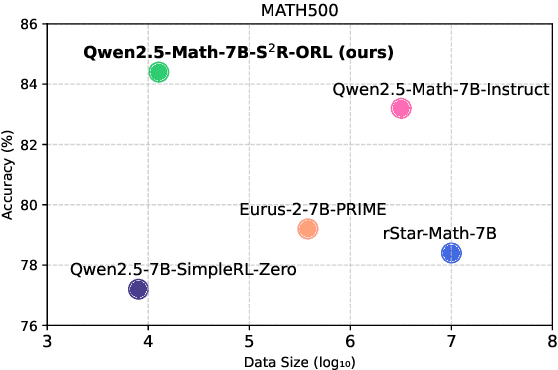
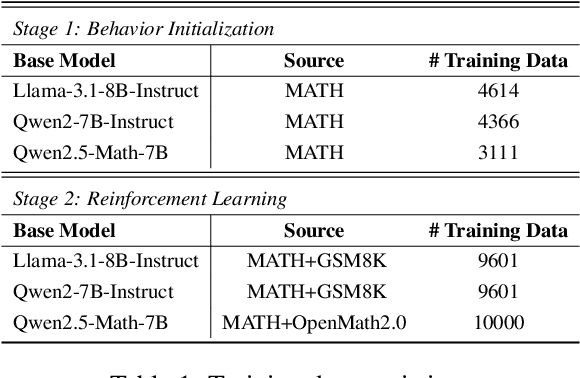
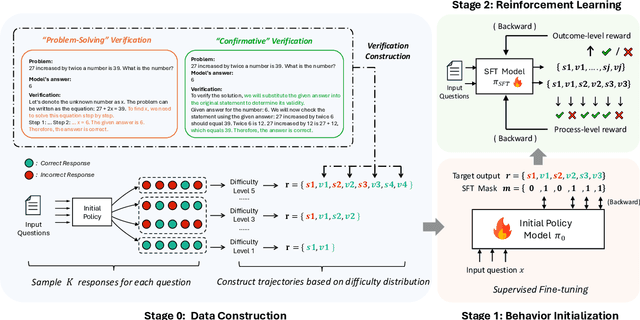
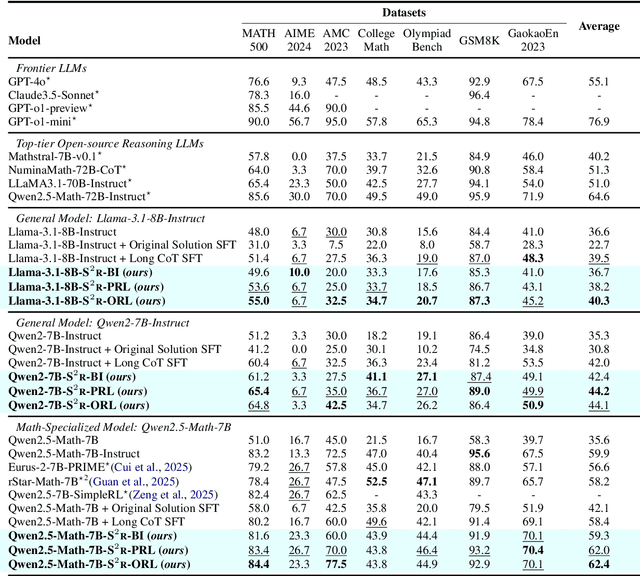
Abstract:Recent studies have demonstrated the effectiveness of LLM test-time scaling. However, existing approaches to incentivize LLMs' deep thinking abilities generally require large-scale data or significant training efforts. Meanwhile, it remains unclear how to improve the thinking abilities of less powerful base models. In this work, we introduce S$^2$R, an efficient framework that enhances LLM reasoning by teaching models to self-verify and self-correct during inference. Specifically, we first initialize LLMs with iterative self-verification and self-correction behaviors through supervised fine-tuning on carefully curated data. The self-verification and self-correction skills are then further strengthened by both outcome-level and process-level reinforcement learning, with minimized resource requirements, enabling the model to adaptively refine its reasoning process during inference. Our results demonstrate that, with only 3.1k self-verifying and self-correcting behavior initialization samples, Qwen2.5-math-7B achieves an accuracy improvement from 51.0\% to 81.6\%, outperforming models trained on an equivalent amount of long-CoT distilled data. Extensive experiments and analysis based on three base models across both in-domain and out-of-domain benchmarks validate the effectiveness of S$^2$R. Our code and data are available at https://github.com/NineAbyss/S2R.
JGR-P2O: Joint Graph Reasoning based Pixel-to-Offset Prediction Network for 3D Hand Pose Estimation from a Single Depth Image
Jul 10, 2020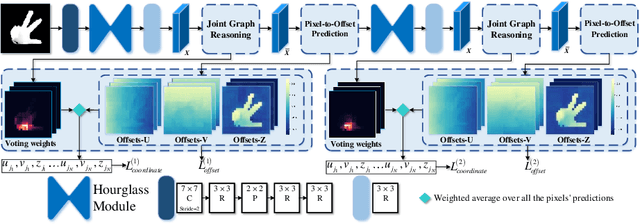

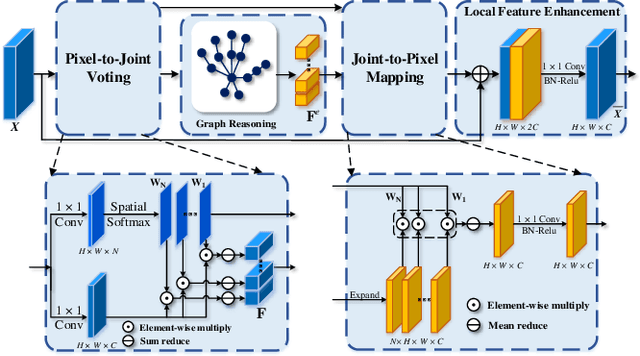

Abstract:State-of-the-art single depth image-based 3D hand pose estimation methods are based on dense predictions, including voxel-to-voxel predictions, point-to-point regression, and pixel-wise estimations. Despite the good performance, those methods have a few issues in nature, such as the poor trade-off between accuracy and efficiency, and plain feature representation learning with local convolutions. In this paper, a novel pixel-wise prediction-based method is proposed to address the above issues. The key ideas are two-fold: a) explicitly modeling the dependencies among joints and the relations between the pixels and the joints for better local feature representation learning; b) unifying the dense pixel-wise offset predictions and direct joint regression for end-to-end training. Specifically, we first propose a graph convolutional network (GCN) based joint graph reasoning module to model the complex dependencies among joints and augment the representation capability of each pixel. Then we densely estimate all pixels' offsets to joints in both image plane and depth space and calculate the joints' positions by a weighted average over all pixels' predictions, totally discarding the complex postprocessing operations. The proposed model is implemented with an efficient 2D fully convolutional network (FCN) backbone and has only about 1.4M parameters. Extensive experiments on multiple 3D hand pose estimation benchmarks demonstrate that the proposed method achieves new state-of-the-art accuracy while running very efficiently with around a speed of 110fps on a single NVIDIA 1080Ti GPU.
 Add to Chrome
Add to Chrome Add to Firefox
Add to Firefox Add to Edge
Add to Edge